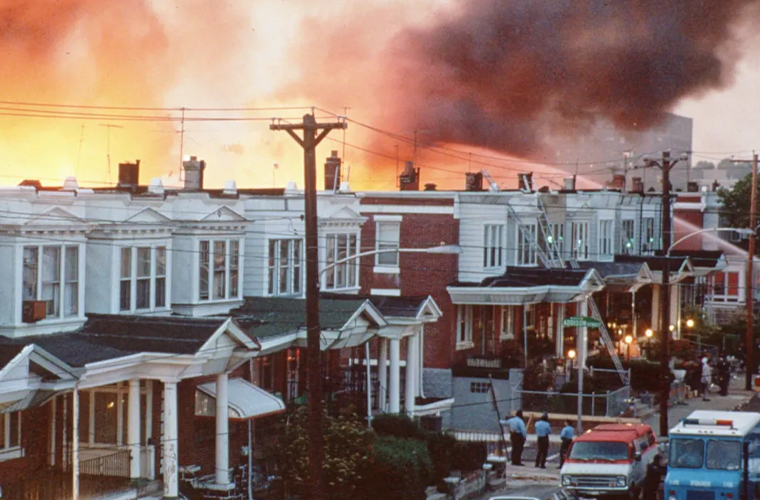On May 13, 1985, a violent confrontation between the Philadelphia Police Department and a radical group called MOVE ended in a horrific tragedy. The police dropped two bombs from a helicopter onto a rowhouse occupied by MOVE members, sparking a fire that engulfed the entire block and killed 11 people, including five children. The fire also destroyed 61 homes and left 250 people homeless. It was one of the worst incidents of police brutality and civil rights violations in U.S. history.
Who were MOVE and why did the police target them?
MOVE was a black liberation organization founded in 1972 by John Africa, a charismatic leader who advocated a back-to-nature lifestyle, animal rights, and resistance to oppression. MOVE members adopted Africa as their surname, wore their hair in dreadlocks, and lived communally in West Philadelphia. They also clashed frequently with their neighbors and the authorities over their loudspeakers, garbage, and weapons.
In 1978, a police raid on MOVE’s headquarters resulted in a shootout that killed one officer and injured several others. Nine MOVE members were convicted of murder and sentenced to life imprisonment. MOVE denounced the trial as a sham and vowed to fight for their release. In 1981, MOVE relocated to a rowhouse at 6221 Osage Avenue in the Cobbs Creek neighborhood. For four years, they continued their protests and confrontations with the police and the city. In 1985, the police obtained arrest warrants for four MOVE members on charges of parole violations, contempt of court, illegal possession of firearms, and making terroristic threats.









How did the standoff escalate into a bombing?
On the morning of May 13, 1985, nearly 500 police officers surrounded the MOVE house and tried to evict them. They cut off the water and electricity and used tear gas, water cannons, and explosives to breach the fortified walls. MOVE members responded with gunfire and refused to surrender.
After several hours of stalemate, the police commissioner Gregore Sambor ordered a helicopter to drop two explosive devices made of Tovex and C-4 onto the roof of the house. The bombs ignited a fire that quickly spread to neighboring houses. The police initially prevented the firefighters from extinguishing the blaze, hoping to flush out the MOVE members. However, the fire raged out of control and consumed the entire block.
What were the consequences of the bombing?
The bombing killed six adults and five children inside the MOVE house. Only two people survived: Ramona Africa, who was severely burned, and Birdie Africa, a 13-year-old boy who later changed his name to Michael Ward. The fire also displaced hundreds of residents who lost their homes and belongings. Many of them never received adequate compensation or assistance from the city.
The bombing sparked widespread outrage and condemnation from the public, the media, and human rights groups. It also exposed the deep-rooted racism and corruption within the Philadelphia police department and city government. A grand jury investigation found that the officials acted recklessly and negligently, but no criminal charges were filed against them. A federal civil rights lawsuit filed by Ramona Africa and the relatives of those killed resulted in a $1.5 million settlement in 1996.
The bombing also traumatized the survivors and the community for decades. Many suffered from post-traumatic stress disorder, depression, substance abuse, and health problems. Some became activists and educators to raise awareness about the bombing and its legacy. Others struggled to heal and move on from the horror they witnessed. The 1985 MOVE bombing remains a dark and painful chapter in Philadelphia’s history. It also serves as a reminder of the need for justice, accountability, and reconciliation in the face of violence and oppression.

